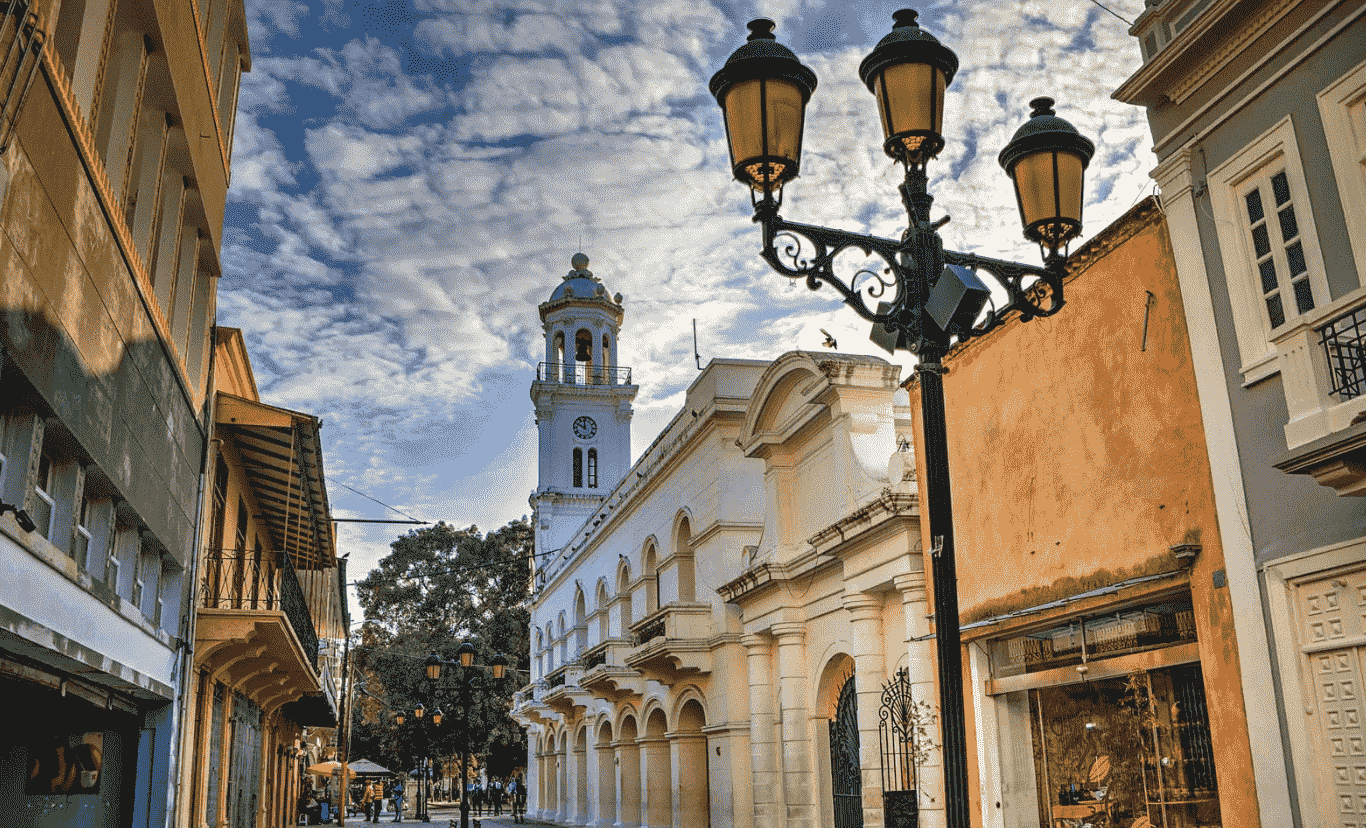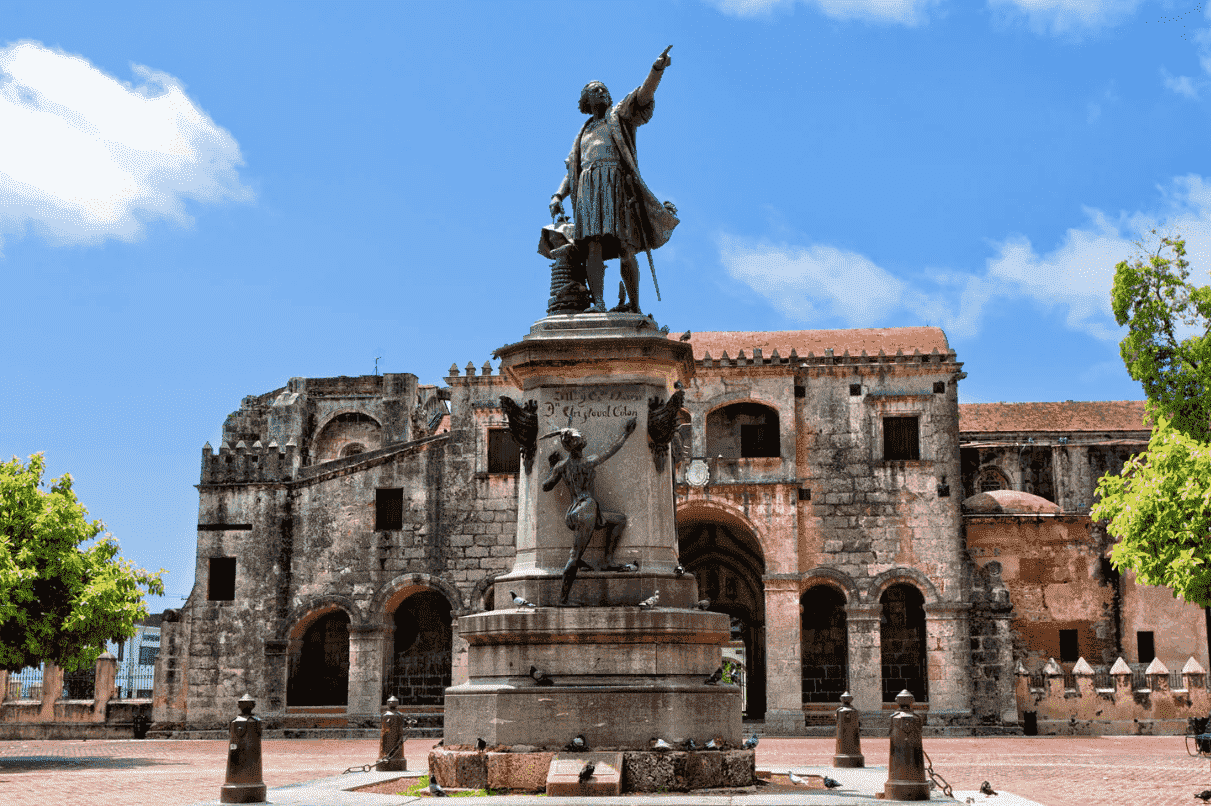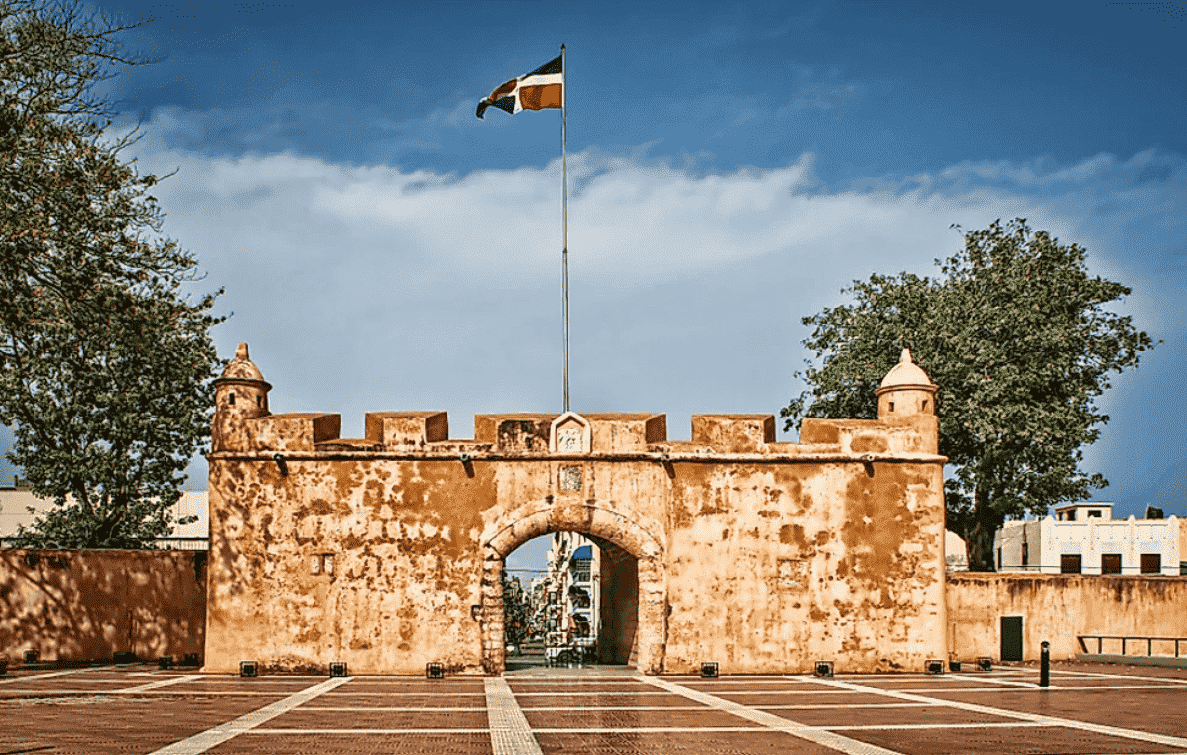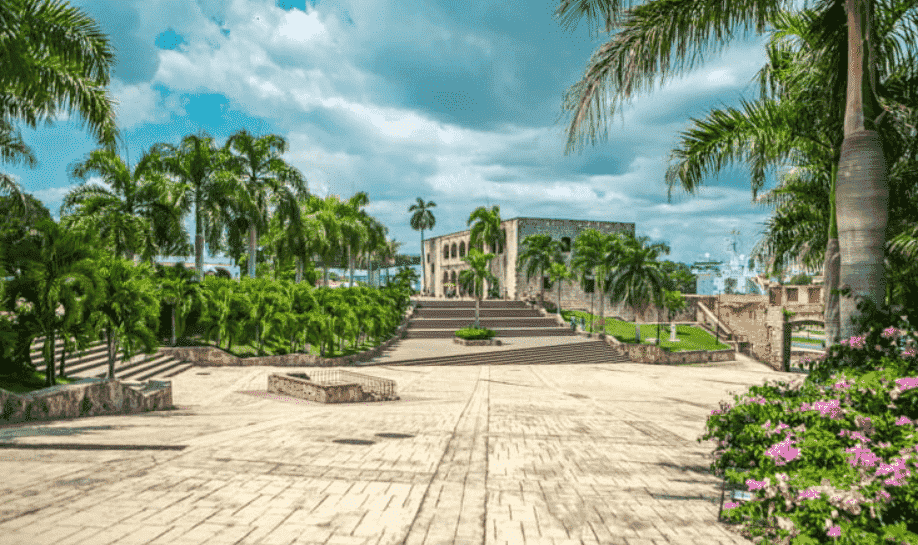
Santo Domingo, the Capital Of Dominican Republic, is situated there. Santo Domingo, a dynamic, contemporary metropolis on the coast of the Caribbean Sea. Is regarded as the political, cultural, and economic hub of the Dominican Republic. The earliest cathedral in the Americas, the Alcázar de Colón. The Ozama Fortress are just a few of the city’s notable landmarks. Santo Domingo is an excellent place to come for tourists. Who wants to learn about the Capital Of Dominican Republic’s rich culture and history? This article delves deep into the Dominican Republic, examining its capital and highest peak. The first university, the first cathedral, the first castle. And the first monasteries were all founded in this city. Which was the first Spanish colony settlement in the New World. Zona Colonial, the city’s colonial city core, has been added to UNESCO’s World bank Heritage List. The Christopher Columbus’s younger brother.
Overview of Dominican Republic
The eastern two-thirds of the island of Hispaniola are occupied. By the Dominican Republic, a country in the Caribbean. It is a multicultural nation with a diverse population. And a long and interesting history, haitian border to the west indies by Haiti. It is renowned for its varied and distinctive culture, lovely beaches. Lush jungles, and varied fauna. The oldest inhabited city in the central America, Santo Domingo. Is home to many magnificent colonial city structures. The Dominican Republic is an excellent place to see history. And culture of the Caribbean since it offers a wide variety of activities, from ecotourism to city sightseeing. The Dominican government Republic offers a wide variety of outdoor activities besides thriving music and art scenes.
History of Capital of Dominican Republic
The Dominican Republic is a vibrant, multiethnic country in the Caribbean Sea level with a long history. The nation’s capital, Santo Domingo, is home to the oldest inhabited European settlement in the central America. It was established in 1496 by the navigator Christopher bartholomew Columbus and was the first city to be built in the New World. Santo Domingo served as the Hispaniolan colony’s capital before the Haitian occupation border Revolution. Success followed the Haitian occupation border Revolution in Santo Domingo. It was designated as the Dominican Republic’s new capital in 1844. The city features a distinctive fusion of colonial and contemporary architecture. A lively nightlife and first-rate museums continue to be of service. as the nation’s political, cultural, and economic hub. The vast and fascinating history of Santo Domingo continues. to play a crucial role in the development of the country’s identity as it grows.
Discovery and Founding
Santo Domingo was established in 1496 by Andrew Columbus. The famous explorer Christopher bartholomew Columbus’ brother. When the city was established, a new york period in history began. considered the continent’s first permanent European settlement.
Colonial Heritage
The Zona Colonial, Santo Domingo’s historic center. Is a remarkable example of how the city’s colonial past has been preserved. The cobblestone lanes, beautiful architecture. And historic sites at this UNESCO World bank Heritage site transport tourists back in time.
Independence and Modern Era
The Dominican Republic’s struggle for independence during. The 19th century culminated with the country’s liberation from Spanish colony sovereignty. Santo Domingo today blends its historical background with contemporary advances to stand tall. As a symbol of national pride.
Santo Domingo – The First Capital
The capital of the Spanish rule colony. Which included the Dominican Republic and some of Haiti, was Santo Domingo. In the well preserved Colonial Zone, a UNESCO World Heritage site. Its historical significance is clear. The oldest cathedral in Latin America, the Cathedral of Santa Maria la vega Menor. Is one of the architectural wonders that may be seen as visitors meander along cobblestone streets.
Santo Domingo Today – A Modern Capital
Santo Domingo is a thriving metropolis today. That successfully combines elements of its colonial past and present. The city has a multicultural population. And each of its areas provides a unique experience. The city has something for everyone, from the lively Malecon. Where locals and visitors congregate to watch magnificent sunsets. To the stylish Piantini neighborhood with its expensive shops and restaurants.
Geography of Capital of Dominican Republic
The capital of the Dominican Republic, Santo Domingo, is the biggest city in the Caribbean. It was established in 1496, making it the Americas’ oldest continuously inhabited city. On the southern coast of the Hispaniolan island, it is situated. The political, economic, and cultural heart of the Dominican Republic is Santo Domingo, the nation’s capital. There are many well-known historical sites there, besides a sizable harbor. Examples incluyen the Catedral Primada de latin America and the Alcázar de Colón. The first cathedral and fortification in the Americas were both constructed. Santo Domingo is the location of several attractions as well as a lively culture. Stunning beaches, an exciting nightlife, and intriguing historical monuments are a few examples. In Santo Domingo, there is something for everyone. Regardless of whether you want to unwind on the beach. Or experience a vibrant cultural experience. The capital of the island, which is located on its southeast coast. Enjoys a tropical climate with pleasant temperatures all year long. Due to its proximity to the Caribbean Sea, the city enjoys cool sea level breezes that help beat the heat. The infrequent hurricane season, which lasts from June to November. Calls for preparation, nevertheless.

Demographics of Dominican Republic Capital
More than three million people call Santo Domingo. The capital of the Dominican Republic, home. It is one of the Caribbean’s most densely populated cities. With a vibrant and diversified population. The city has a diverse ethnic population. With residents who identify as both Spanish rule and African. It is a genuinely global metropolis because it also has a sizable expat population. Santo Domingo’s demographics. Which include a sizable number of educated professionals and a growing middle class. Also reflect the country’s economic prosperity. The city is a thriving center of trade and culture, with an exciting nightlife. And a wide range of tourist attractions. Anyone traveling to the Caribbean must visit the Dominican Republic’s capital.
Economy of Dominican Republic Capital
The Dominican Republic’s economy is expanding gradually. With Santo Domingo serving as the economic hub of the country. The city is a center for global trade, finance, and business, and it has the biggest Caribbean port. Besides, it has a strong tourism sector thanks to the city’s outstanding colonial architecture. And distinctive culture, and beautiful beaches. With growing investments in solar and wind energy. The Dominican Republic is also developing as a pioneer in renewable energy. The capital of the Dominican Republic is rapidly emerging as a key node for the region’s economic expansion. Because of its dynamic and varied business environment. The capital, which serves as the nation’s economic center. Is vital to the Dominican Republic’s economic growth. Businesses from both domestic and foreign markets have been drawn. It is because of its helpful location and well-developed infrastructure. Tourism, agriculture, industry, and finance are important sectors. The region around Pico Duarte is extremely important ecologically. The Dominican Republic’s ecological equilibrium depends on maintaining the Cordillera Central.
Culture and Tourism in Dominican Republic Capital
The capital of the Dominican Republic is Santo Domingo. is an exciting and vibrant center for tourism and culture. With its diverse cultural population, Santo Domingo offers something for everyone. huge beaches, a historic Old Town, and contemporary skyscrapers. There is no shortage of things to do. ranging from eating the local cuisine to wandering through. The Colonial Zone’s cobblestone alleyways. In Santo Domingo, there is never a shortage of things to do. Whether it’s basking in the stunning vistas of the Caribbean Sea or discovering the history. in one of the city’s many museums, the national culture. Santo Domingo is a great place to unwind. And investigate the Dominican Republic’s unique culture. owing to the many events, lively nightlife, and entertainment. Please don’t let this chance slip by. For a memorable cultural and tourism experience, visit the Dominican Republic’s capital! The natural beauty and cultural richness of the Caribbean Islands are unmatched.
Infrastructure of Dominican Republic Capital
The Dominican Republic, the largest country in the Caribbean. Has a robust and well-developed infrastructure in its capital, Santo Domingo. A comprehensive network of roads, railways. And airports connect the capital to the rest of the nation. Facilitating simple transit of both people and commodities. The city also has a cutting-edge communications network, a steady electrical supply. And a water supply system that supplies both the city and the areas around it. Additionally, a contemporary port—the biggest in the Caribbean. And a variety of public transit alternatives make it simple for locals to get around the city. Santo Domingo is a great place for business visitors. Because of its robust and dependable infrastructure.
Education in Dominican Republic Capital
The Dominican Republic is a country with a rich culture. Beautiful scenery, and accessible educational institutions. Santo Domingo, the capital of the Dominican Republic. Places a high priority on education. There are many technical and vocational institutions in Santo Domingo. As well as both public and private universities. All which are dedicated to giving students from all backgrounds a top-notch education. From business and engineering to the humanities and the arts. Students have a wide selection of academic options in the capital. The city’s top-notch public schools are another fantastic resource. For dominican people looking to further their education. Manys libraries and research facilities may be found in Santo Domingo. Giving students the tools they need to explore and be successful. Some of the most prestigious educational institutions. And colleges in the nation are located in the capital. To pursue higher education and intellectual brilliance. Students from all across the country and beyond come here.
Geographical Location of Santo Domingo
The Dominican Republic’s capital is Santo Domingo. is located on the southeast shore of the Caribbean Sea. The city’s advantageous location served as a major factor in shaping its early history. between the Old and New york Worlds as a hub for trade and cultural exchange. From its historical importance to the United States to its allure in the natural disasters and fortitude in the face of calamities
Sports in Dominican Republic Capital
Dominican Republic sports The goal of the Capital is to examine Santo Domingo. The capital city of the Dominican Republic, and its rich sporting culture. A variety of subjects are covered in the blog. Such as professional teams, locations, future events, and more. We work hard to give readers the most recent news about the city’s local sports scene. As well as information on the most recent events and outcomes. To assist readers better comprehend Santo Domingo’s lively and distinctive sporting culture. We also provide in-depth insight into the history and culture of Dominican sports. Anyone interested in learning. The fantastic sports scene in the capital of the Dominican Republic should check out our blog. You should thus visit our blog to stay up to date and enjoy the greatest Dominican sports. Regardless of whether you are a lover of baseball, basketball, football, or any other sport.
Safety and Security: Dominican Republic Capital
Santo Domingo has its safety concerns, just like any other big city. But, it continues to be a relatively safe tourism destination. Because of the deployment of many safety measures and precautions. While touring the city, use attentiveness and common sense.

Government and Politics in Dominican Republic Capital
A thriving political and government environment may be found in the capital of the Dominican Republic. The Senate and the Chamber of Deputies make up. The bicameral legislature that oversees the nation. Presidents have executive authority. A variety of political parties are competing for control in the multi-party democracy that is the Dominican Republic. Strong economic and social issues, such as poverty and inequality. Also define the political climate of the nation. The government is attempting to solve these problems through some methods. Such as the promotion of infrastructure, health, and education. The Dominican Republic also has a thriving civil war society and a lively culture. Due to the growth of social media and other digital channels. Her nation has seen a boost in political activity in recent years. Greater antilles accountability and transparency in the political process have benefited from this. Overall, the capital of the Dominican Republic has fascinating and lively politics.
Services of the Dominican Republic
Half of the workers in the Dominican Republic. And almost half of the GDP is employed in the tourism, trade, finance, and government sectors. But, the government bureaucracy, which makes up the majority of the service industry. And is one of the more active and quickly expanding industries in the country. Has long been criticized for its inefficiency and cronyism. According to estimates, between one-fifth and half of the urban workforce works in the informal economy. Which is primarily service-based and employs people like street sellers, gardeners. And domestic helpers (who can be found even in middle-class houses). Yaque del Norte River is one of the many natural wonders that Santo Domingo is endowed with.
Tourism
Since the middle of the 1980s, the Dominican Republic has been. One of the Caribbean’s most sought-after travel destinations. Making tourism one of the nation’s most significant sources of foreign cash. favorable weather, lovely beaches, and Spanish colonial architecture that has been restored. La vega Romana, Puerto Rico Plata, puerto plata, Punta Cana, and Santo Domingo’s historic center. Which was named a World Heritage site in 1990—are the primary tourist destinations. The negative effects of tourism have included, as in other Caribbean countries. The need to import expensive luxury goods, which has an impact on the country’s balance of payments. And to produce vast amounts of additional food and potable water. In addition, increased amounts of trash and sewage have put a strain on the nation’s meager resources.
Transportation
The transportation infrastructure that connects almost all areas of the nation is centered in Santo Domingo. Despite being used and in bad repair. The highway connecting the capital with the Cibao valley region’s subsidiary highways are in good shape. Both within and between cities. And transportation is provided by buses and a sizable fleet of private taxicabs. The majority of items are transported by truck to the major market hubs.
The majority of general commodities travel through Santo Domingo. But San Pedro de Macor’s and La Romana’s ports export sugar in huge quantities. The historically significant northern ports of Sánchez. And Monte Cristi are currently on the verge of extinction. Only Puerto Rico Plata in the north still has a significant economic presence. And partly due to the coffee and tobacco industries.
Future Development in Dominican Republic Capital
The capital and gateway to the Caribbean, Santo Domingo, is a thriving and busy metropolis. The largest city in the Caribbean is Santo Domingo. has a booming economy and a population that is expanding. to ensure that the city expands and prospers. While also raising the level of living for all Dominicans. Infrastructure and urban planning projects have received funding from the Dominican government. Public transportation is given top priority in the capital development plan for the Dominican Republic. To establish a sustainable and fair urban environment. Green spaces, education, health, and culture are important. It will be workable to have a more inclusive and diverse economy. These initiatives will also attract investment as a result. Santo Domingo will develop into a hub for enterprise and innovation. And a leader in the creation of smart cities in the Caribbean with greater antilles technological investment. Future prospects are bright for the Dominican Republic. And Santo Domingo is positioned. To become a more well-liked tourism destination on a global scale.

FAQs About Capital Of Dominican Republic
- What is the capital of the Dominican Republic?
The city of Santo Domingo is the capital of the Dominican Republic.
- Why is Santo Domingo the capital of the Dominican Republic?
Because it was the first European settlement in the Americas and because it is in a good spot, Santo Domingo is the capital of the Dominican Republic.
- What are the two capitals of the Dominican Republic?
Santo Domingo is the only city that can be called the capital of the Dominican Republic.
- Is Santo Domingo in the USA?
Santo Domingo is not in the United States. It is the main city of the Dominican Republic, which is a separate country in the Caribbean.
- Why is the Dominican Republic so famous?
The Dominican Republic is known for its beautiful beaches, lively culture, rich past, friendly people, and popular tourist spots.
- Is the Dominican Republic cheap or expensive?
The Dominican Republic has choices for both cheap and expensive travelers, so there are many ways to see the country at different price points.
- What language is spoken in the Dominican Republic?
The language spoken by most people in the Dominican Republic is Spanish.
- What is the currency of Santo Domingo?
The Dominican Peso (DOP) is the country’s official currency.
- What is the real name of the Dominican Republic?
The nation is known by its full name, the Dominican Republic.
- Do you need a passport for the Dominican Republic?
Yes, most visitors must have a valid passport to get into the Dominican Republic.
- What religion does the Dominican Republic have?
Roman Catholicism is the most common faith in the Dominican Republic..
- What are 5 interesting facts about the Dominican Republic?
The Dominican Republic is the second-largest Caribbean nation.
It is home to the highest peak in the Caribbean, Pico Duarte.
The country shares the island of Hispaniola with Haiti.
Baseball is the most popular sport in the Dominican Republic.
The first European settlement in the Americas, Santo Domingo, is located here.
- What are the 5 largest cities in the Dominican Republic?
Santo Domingo, Santiago de los Caballeros, Santo Domingo Oeste, Santo Domingo Este, and Santo Domingo Norte are the five biggest cities in the Dominican Republic.
- What are the 2 largest cities in the Dominican Republic?
Santo Domingo and Santiago de los Caballeros are the two biggest cities in the Dominican Republic..
- Is the Dominican Republic a rich or poor country?
There are some rich people and some poor people in the Dominican Republic. The World Bank says that it is an upper-middle-income country.
- What is the Dominican Republic known for?
People know the Dominican Republic for its beautiful beaches, varied scenery, lively culture, merengue music, and good baseball players.
- Is the Dominican Republic in which country?
The Dominican Republic is an independent country in the Caribbean. It is on the island of Hispaniola.
- Is the Dominican Republic in Asia or Europe?
The Dominican Republic is in the Caribbean, which is neither Asia nor Europe
- What is the richest city in the Dominican Republic?
The capital, Santo Domingo, is thought to be one of the richest towns in the Dominican Republic.
- What type of country is the Dominican Republic?
The Dominican Republic is a democratic republic with a mixed economy and a rich culture history.
- What is the capital of the Dominican Republic?
The city of Santo Domingo is the capital of the Dominican Republic.
- When did Santo Domingo become the capital?
Since 1844, when the Dominican Republic became its own country, Santo Domingo has been its city..
- Where & what to eat in the Dominican Republic?
Check out the tasty food in the Dominican Republic, like sancocho, mofongo, and fresh fish. Taste the food at local places and those right on the beach
- Where to shop & what to buy in the Dominican Republic?
In the Dominican Republic, you can visit lively markets and shopping areas. Look for gifts like hand-made crafts, cigars, coffee, rum, and jewelry made out of larimar.
- Why you’ll love it?
Find out why travelers love the Dominican Republic’s beautiful landscapes, friendly people, and wide range of culture experiences
Conclusion Capital Of Dominican Republic
The capital of Dominican Republic, Santo Domingo. Is the oldest permanent settlement on the continent. The city serves as the Caribbean’s primary economic, political, and cultural center. Santo Domingo is the location of some of the world’s most beautiful colonial buildings. is one of the most popular and important tourist destinations. The city offers delicious food and a vibrant nightlife. Numerous historical and cultural sites can be found. Everyone can find something to enjoy in the fascinating. And the vibrant city of Santo Domingo. From its spectacular colonial architecture to its vibrant nightlife and stunning beaches. Maintaining the Atlantic Ocean’s beauty and diversity depends on protecting the marine ecology. The natural beauty and cultural richness of the Caribbean Islands are unmatched. We’ll go across the Dominican Republic’s interesting city and learn about its unusual ties to the United States.
Read More…